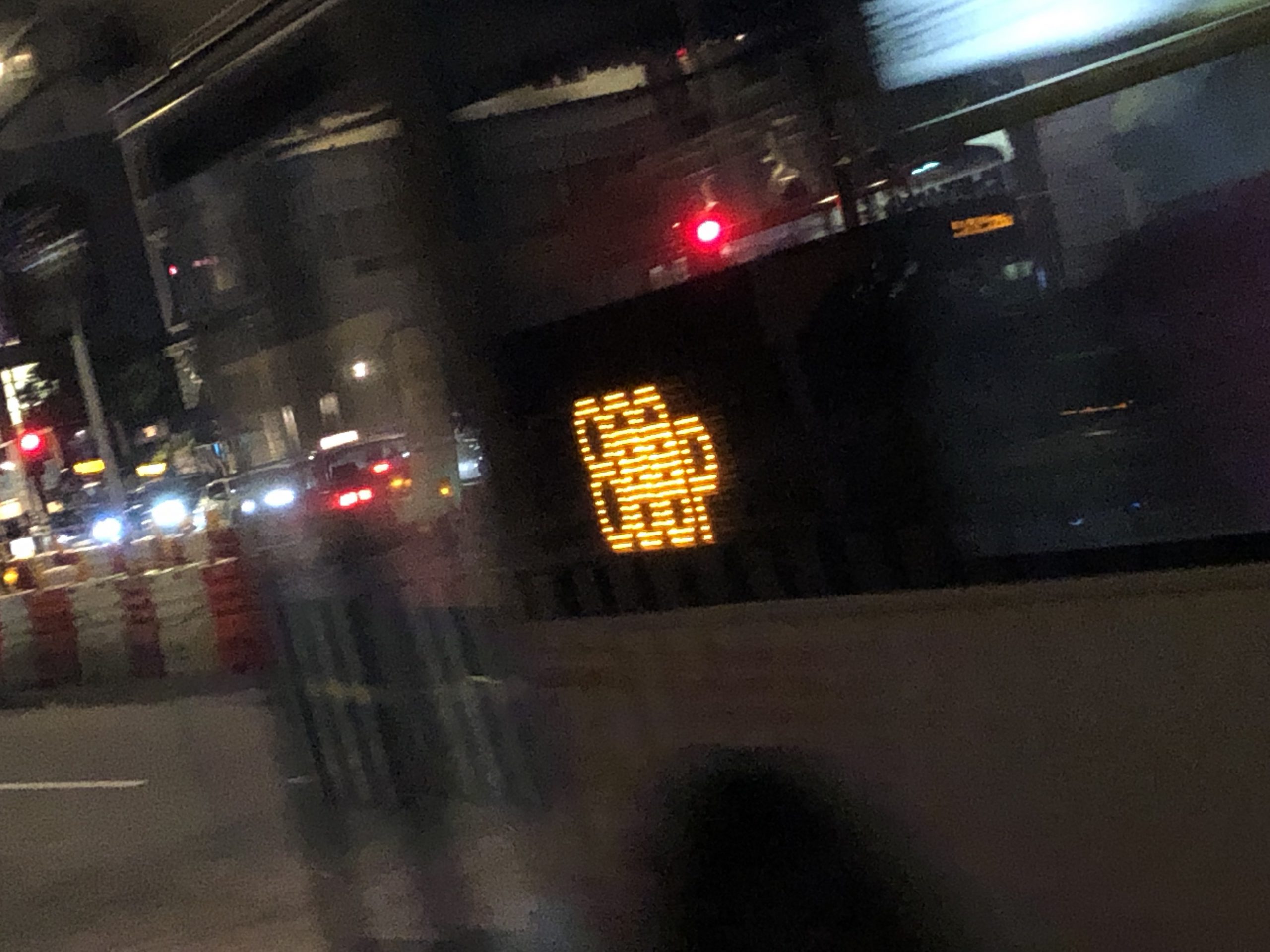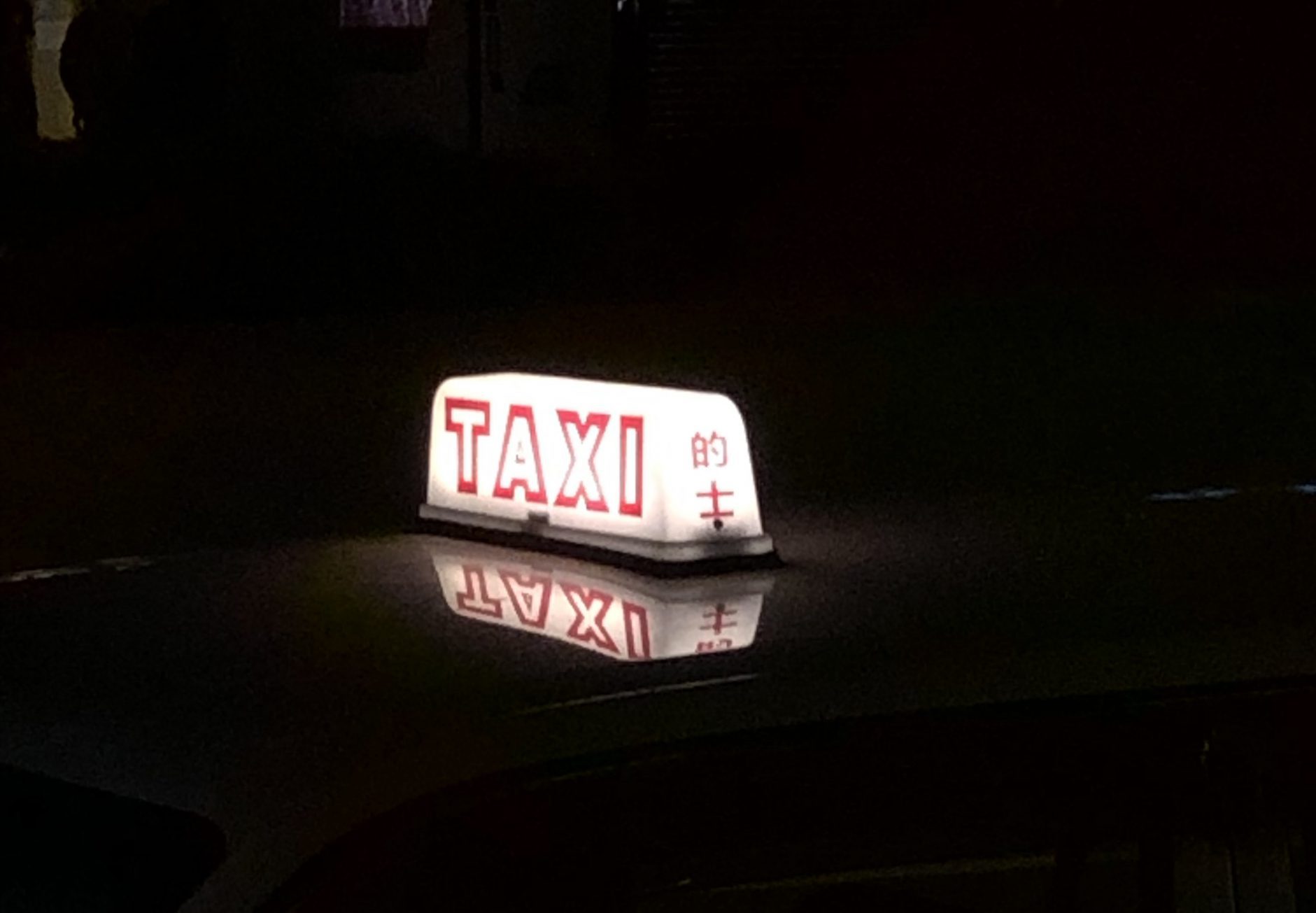RED LIGHT, GREEN LIGHT
The film narrative mimics that of a Hong Kong’er waiting for the red light to turn green, before making their way across the crossing. Without additional music or voiceover, the main purpose of this film is simply to evoke an eerie sense of familiarity, as it captures purely the visual, auditory and sometimes emotional experience that takes place through this simple event. Reflecting an experience that needs not to be described, but narrated by the city itself – the traffic lights, and the routine life of a Hong Kong’er heading to their next destination.
Picture oneself being surrounded by blinding lights, flashing cars, and dense crowds of people rushing to their next destination – the essential moving elements evident in a ‘Fast City’ like Hong Kong. Yet when the light turns red, we stop walking, forced into temporarily detaching ourselves from being participants of the fast city, to being observers.
Awkwardly locking eyes with other pedestrians…
Observing the movement of cars. Panning left and right, waiting for signs of them stopping, as that would mean the lights are about to switch.
I realised that within a fast city like Hong Kong, road crossings are one of the few places where we are often forced to pause. Despite this, our focus does not remain stationary, constantly getting drawn to the quick, clashing movement around us, a habit developed and dictated by our impatient mindset and our busy lives… the fast that exists where it is supposed to be slow, the mind that keeps rushing when our bodies pause… I was set on highlighting this through my film.
One of the main themes I was most inspired by from tutorials and readings this semester was that of ‘Walking’, placing us humans as one of the key elements of a dynamic city. I began to understand that our city was animated by light, shadow, and most importantly, our own activity – which constantly alters our perception of it. As we stride through the city, we catch glimpses of our changing surroundings, and through occasional reflective surfaces, alleyways and position of light, we ‘peek’ things behind us or things we are not supposed to see. We constantly experience space through changing perspectives, therefore, anything we see, at any time, will appear different.
When the light turns green and the character in the film starts to walk, we begin to see that this difference is then experienced by each separate individual, sometimes going separate ways, sometimes crossing each other, resulting in infinite possible ways to perceive the city visually.
But what if – thinking back to red light – we, the perceiver, momentarily stopped ‘walking’? Our experience tells us that the city does not stop with us, in fact, it appears to move ever faster, relative to the now still observer.
The question then becomes how to represent this through film: how to detach the audience, and keep them separate from the ever speeding sights and sound. How to keep the audience grounded and stationary, without getting sucked into the lights and the traffic and the overwhelming senses that do not seem to stop with them.
The answer is nothing. ‘Walking’ tells us that the city is always dynamic. I would portray this ‘nothingness’ by switching between shots of the fast city and then interrupting with a black screen, breaking the audience off from the overwhelming clashes and pulls them back into the stillness of the present. Paired with rhythmic heartbeat in the background, evokes a momentary reflection, reminding them that they are but the observer.
Next was to research ways to enhance this contrast. Ways to bring out the ‘fast city’ within the clips. I had to make the clips jarring and overwhelming. So I took reference and inspiration from a previous film I made about City Lights in Hong Kong. The idea there was also to evoke a sense of eerie familiarity, to depict the everyday street lights and neon signs in as distorted, blurry still images, presented using Ken’s burns effect. The aim of that particular film was to present the everyday lights as fragmented memories, that are always there but barely paid attention to due to the quick paced lives of Hong Kong’ers. It was somewhat related, but most importantly and excitingly, it successfully captured rushing movement in the form of still images. Hence, I decided to use some still images of similar fashion in this film.
To add emphasis on these objects, they where photographed at night, allowing it to give a striking impression to the audience. The objects consisted of symbols that reflected a fast city, taxi, blurry lights, moving buses, etc. How often do we pay attention to these details when we cross the street? Our focus is always on us…’When is it our turn to cross?’, ‘I am running late’, ‘Move faster or get out of my way’.


Furthermore, I chose rainy weather to make the film, utilised raindrops and the reflective ground surfaces to add to the overwhelming sensory overload. Causeway Bay was the perfect selection of a site as it allowed various elements of the Urban Hong Kong live to collage with each other: Billboards, Traffic, Neon Lights, Crowds, Noise.
A dynamic city, condensed into frames. A city so fast, observed in the stillness of the Red Light, experienced through the motion of the Green.
dir. and filmed by Lukas Lawrence HEUER
3035858547
The color grading and cinematography is really top notch, I also love that even in adverse weather condition, the outcome is still very professional and well directed. However, the message the film tries to convey can be clearer.
Nice visual design, appreciate how you have managed to capture some of the most mundane moments in everyday life. The photographs are able to capture speed. If your purpose is to question how the city still moves while we stop walking, I believe the contrast you make between the green light and red light could be even larger. How do we see the city differently while we are walking? How do we match our walking pace with the speed of the city? During green light, it seems the observation has switched back to a third-person’s point of view. Is there any particular meaning to this?